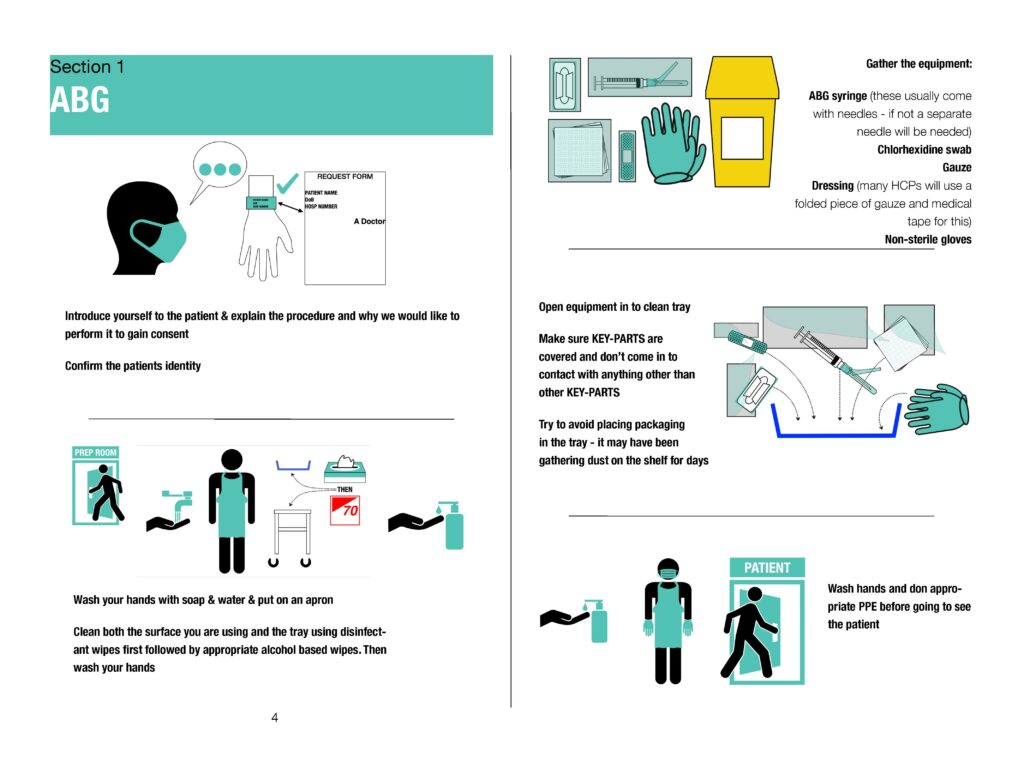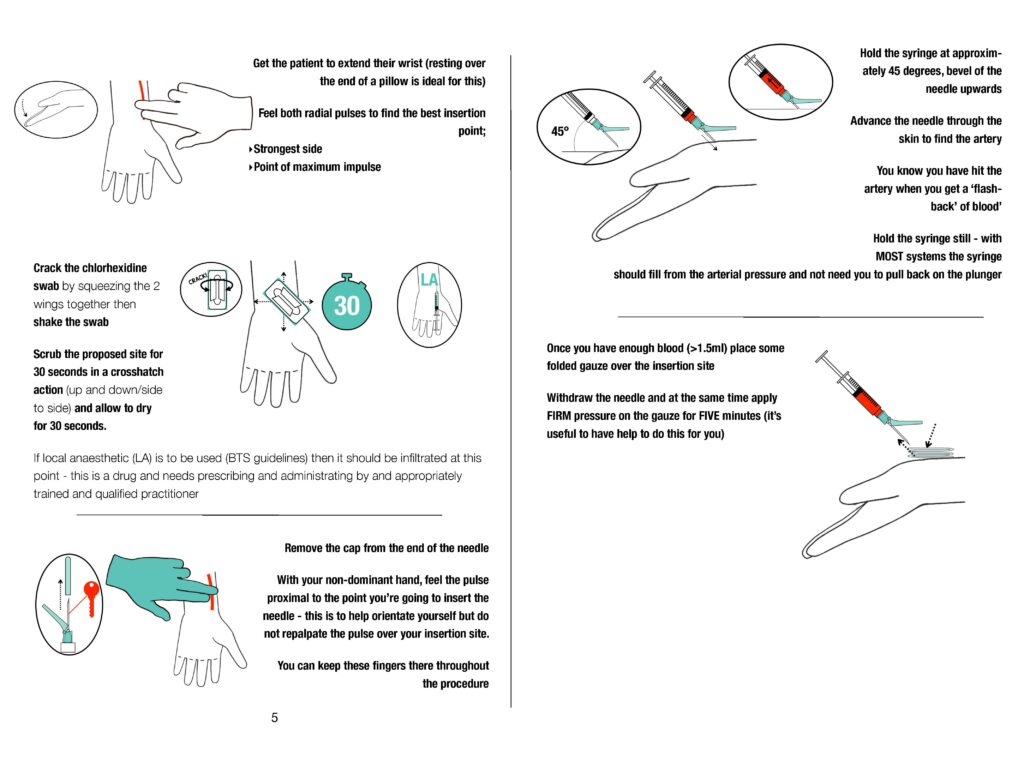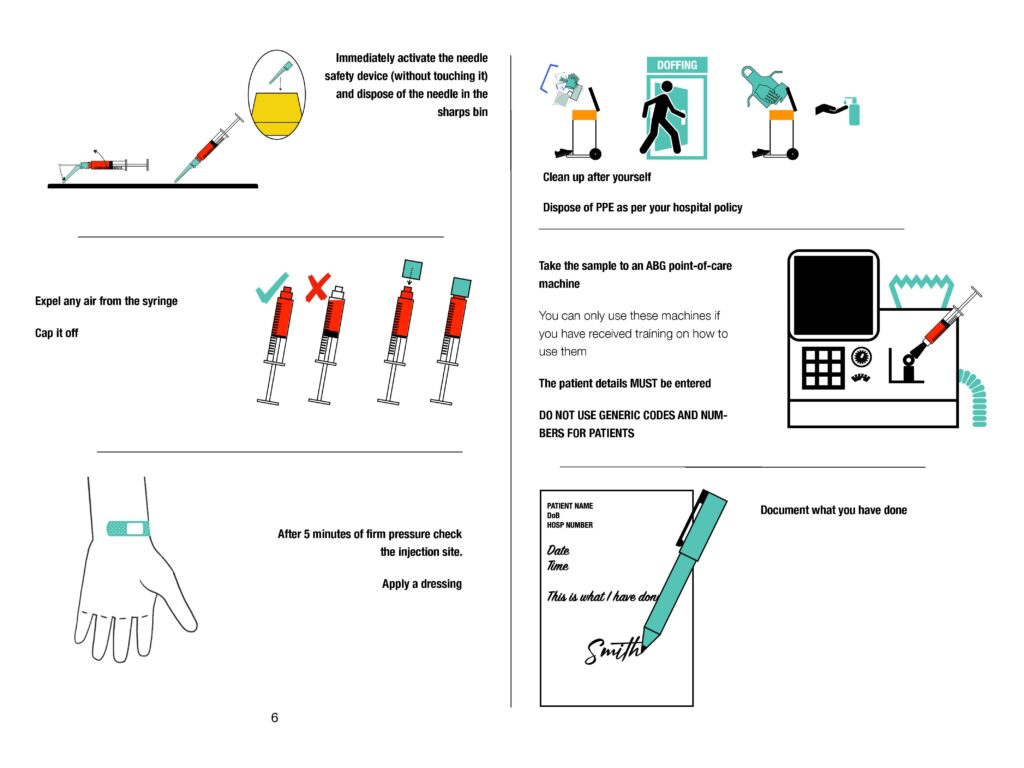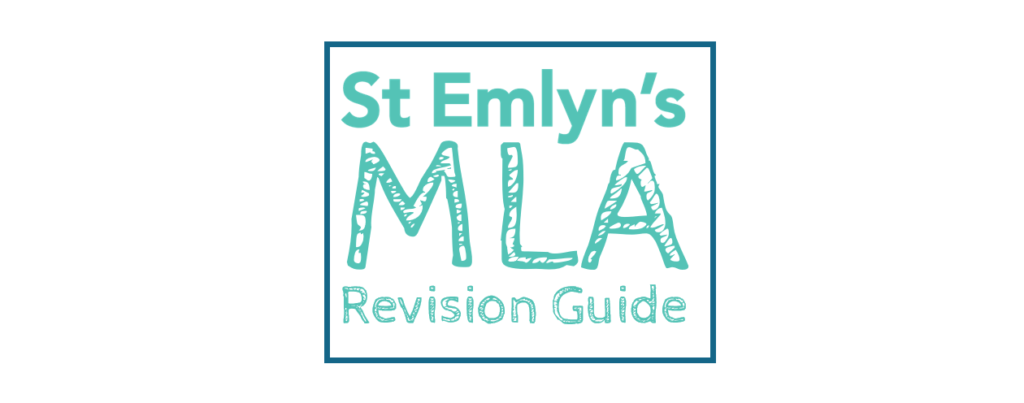Introduction
What follows is a step-by-step guide to clinical procedures based on the guidelines used at St Emlyn’s Hospitals. It is really important to note the guidelines change with time, and from place to place, so you should make yourself aware of the most current guidelines in use for where you are working.
One of the best ways to learn how to do a procedures is to:
‣ Watch a demonstration real time to help you understand what you are aiming for.
‣ Get instructions on how to do the procedure from an expert
‣ Go through it in your own head to make sure you understand and ask questions if you don’t
‣ Have a go at doing it under instruction from this iBook, with specific feedback on technique from an expert.
‣ Then practice without using this guide to see how much information you retain (retrieval practice) and importantly get feedback on your performance from someone who knows what they are doing or from a fellow learner using site a guide
General Approach in the Exam
In these stations you may be asked to perform or explain the skill. Like all other stations, no matter what is being assessed ensure you have clear opening and closing statements/summaries prepared.
Adopting a generic approach will help maximise your marks even if you are a little rusty on the knowledge side of things. A large proportion of the marks are given to the generic approach of the skills rather than the minutiae.
The main thing candidates often run into trouble with is their timing. With stations aimed primarily at demonstrating skills, easy marks are often lost if candidates fail/run out of time to express their post procedure plan.
General approach
Introduction
“Hello, my name is Phil. I am one of the medical students.”
“Please can you confirm your name and date of birth, while I wash my hands, put on my PPE and ensure we are somewhere private.”
“Are you comfortable currently. Do you need any pain relief or a drink?”
Ascertain understanding
“I believe you have come in because of…?”
“What is your understanding of what has happened and what we need to do next?”
“Clarify any issues”
- Ensure you clarify any issues that arise
Brief past medical history
“Do you have any medical problems I need to know about?”
“Regular medications and allergies?”
- E.g. for penetrating procedures – bleeding/platelet disorders or anticoagulants
Explain procedure and obtain consent
Briefly explain the procedure
Obtain consent (see Chapter 4)
“If at any time you want a break or want to stop please let me know”
Preparation
Confirm
- site
- review appropriate investigations (e.g. chest x-ray for chest drain insertion)
- calculate any drug doses needed (e.g. local anaesthetic)
- ensure any monitoring needed
Prepare
- patient position
- equipment
- assistant (if required)
Perform skill/procedure
See list of example procedures below
Post procedure management and close
“Well done. That is the procedure completed”
“Are you ok? Do you need any further pain relief?”
“To complete the procedure we need to…”
- Perform the following tests to ensure everything is ok (eg repeat chest x-ray for chest drain; bloods for joint aspiration).
- I need to give you the following information for you to take home (e.g. follow up advice post pneumothorax aspiration; wound care and suture removal advice post wound management).
“Does all that sound reasonable to you? Do you have any questions or concerns?”
Arterial Blood Gas (ABG)



Core procedures/skills
Skills listed in GMC Practical Skills and Procedures may be assessed. All of the infographics have been produced by Nick Smith and are also available as a full ebook.
The majority of suggested resources are from: St Mungo’s, Oxford Medical Education and the Geeky medics website. Youtube is also a really useful resource for visual learners.
Diagnostic procedures
Anaesthetic
- Procedural sedation: Adult*; Paediatric*; Pharmacological agents
- Airway adjunct: OPA; NPA
- BVM ventilation
- Supraglottic airway insertion*
- Endotracheal intubation/Rapid sequence induction*
- Oxylog 3000 plus setup
- Blocked tracheostomy: 1; 2
- Front of neck access*
- Non-invasive ventilation*: BiPAP (BTS algorithm); CPAP
Obstetric/Gynaecology
Orthopaedics
Trauma
Other
- Suturing techniques
- Slings:
- Broad/high arm
- Polysling
- Dressings:
- POP application:
- Walking boot
- Use of crutches
Blocks
- Facial blocks
- Bier’s block
- Haematoma block
- Wrist blocks: landmark / ultrasound
- Digital nerve blocks
- Fascia-illiaca block: landmark / ultrasound
- Femoral nerve block ultrasound
- Ankle blocks: landmark/ultrasound
